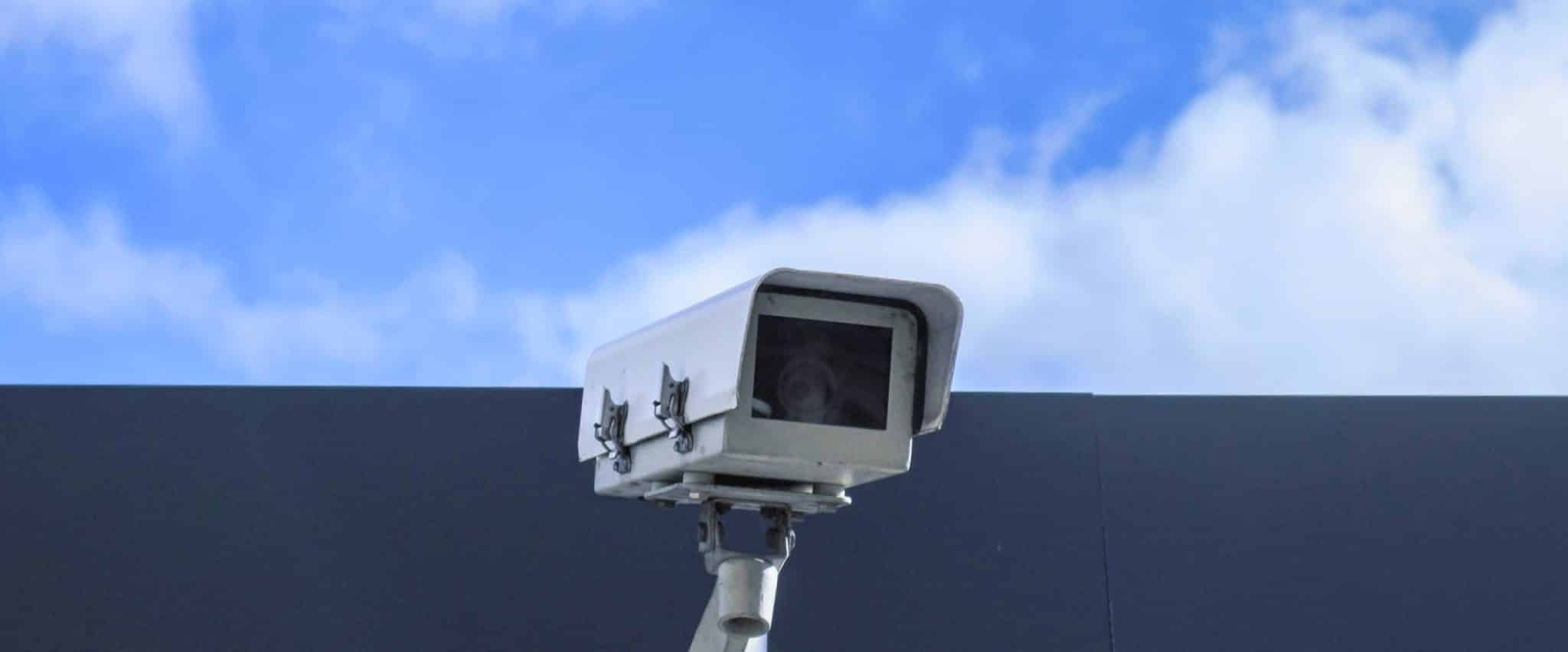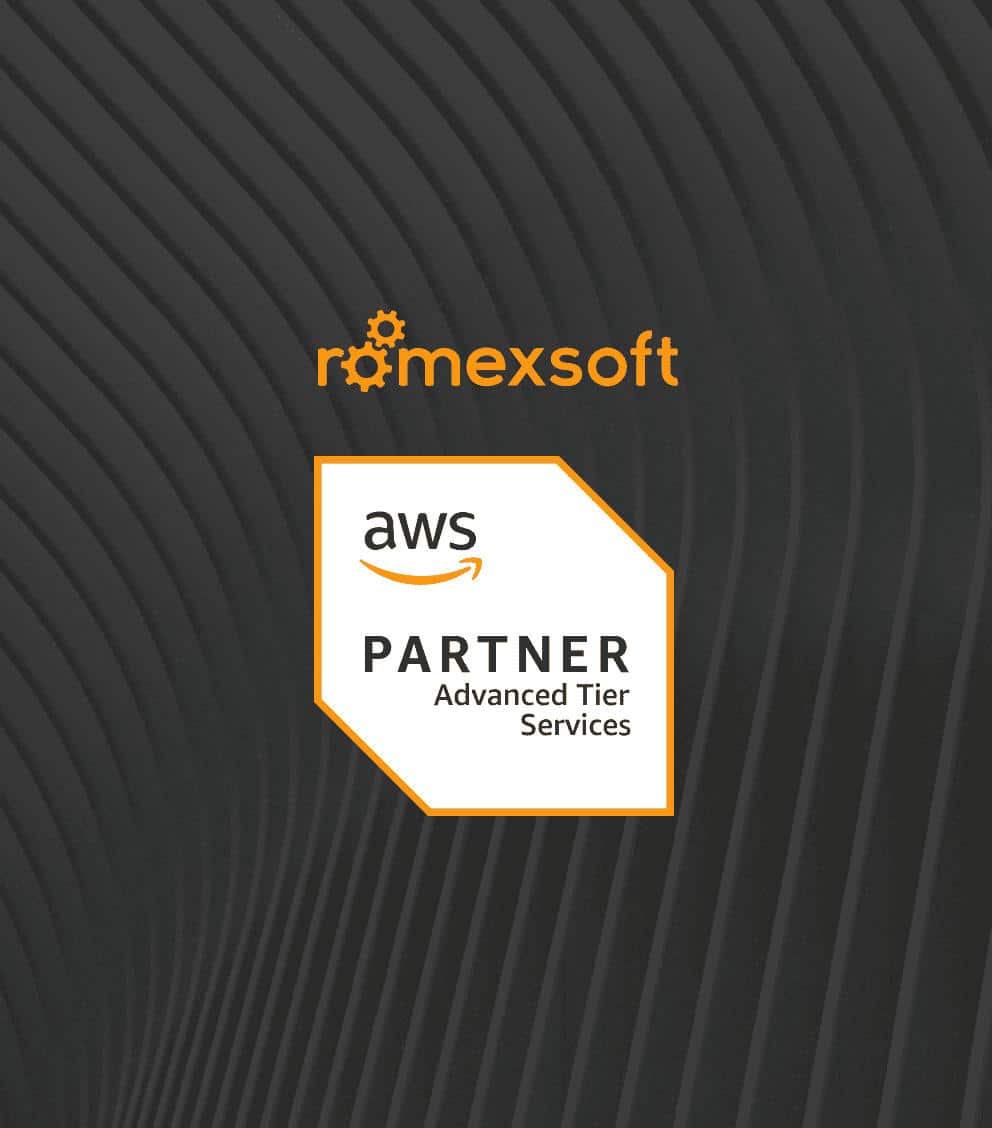Public Cloud Security Best Practices and Risk Checklist
To ensure public cloud security, you must use a multi-layered approach that covers your system from every angle. This article explains how to do this step-by-step in the shared responsibility model context of public cloud. It also describes best security practices and lists AWS-native and third-party tools needed to strengthen defenses, increase visibility, and automate security in the public cloud. Finally, it explains threats you can face in the public cloud and how to evaluate if you need to upgrade your current security setup.
The blog gives an overview of:
- public cloud security mindset shift
- seven‑step security automation roadmap
- post‑migration threats
- public cloud security best practices
- key AWS security tools
- quick maturity self‑assessment

Table of Contents
When moving to the public cloud, you must prioritize security because this transition comes with a significant mindset change due to the shared responsibility model. It’s also very different from the private cloud, where the whole system is under your control.
In our experience, we’ve faced multiple cases where public cloud migration without thorough security led to serious complications for the business. For example, one e-commerce company experienced degraded performance during peak traffic hours post-migration. Their application code didn’t have any issues, but they suffered because of an influx of bot traffic that slipped through unmanaged public cloud perimeter layers. Implementing native AWS protections that offered unified visibility and active controls resolved the problem entirely.
This guide will explain how to ensure public cloud security, making it reliable, scalable, and cost-efficient.
Table of Contents
Why Public Cloud Security Needs a Different Approach
Traditional on-premise security setups are centralized with protections covering a hardened perimeter, and private cloud systems can be similar in design. However, this security system design doesn’t fit the public cloud, where you cannot guarantee network edge security and rely on shared responsibility with the cloud provider.
Therefore, it’s essential to make a fundamental shift in your strategy to build protections for distributed workloads that are internet-facing by default. Defenses for public cloud security must focus on workloads and identities instead of the perimeter.
Moving to the public cloud often exposes cloud-native security gaps that original legacy systems don’t account for, such as:
- Misconfigured storage
- Overly permissive IAM roles
- Insufficient resource monitoring
One of our clients, Greenfence, encountered these issues after moving to AWS, and here’s how we resolved them:
- Integrated AWS Security Hub to ensure real-time visibility and replace the centralized logging
- Integrated AWS WAF to protect exposed workloads and ensure that the client’s team has immediate insight into traffic patterns, misconfigurations, and policy violations
With these changes, the client not only got a boost in their public cloud security but also managed to enhance their ongoing compliance efforts.
Remember that when operating in the public cloud, you work with the Shared Responsibility Model for system security. This means that, unlike with the private cloud, the provider secures the infrastructure while you secure what runs on it. Therefore, your primary goal must always be to operationalize this model to the fullest by building identity-aware, automation-driven systems.
What Are Common Threats to Public Cloud Security
Public cloud security breaches usually do not occur due to a single targeted exploit. In most cases, weaknesses compound over time, making the system vulnerable. In addition, remember that shared responsibility means you must have complete trust that the public cloud provider delivers top-notch protection.
Most common weaknesses that emerge after public cloud migration include:
- Over-permissioned identities
Standing admin access, unused service accounts, and overly broad policies typically lead to compromised public cloud security points. - Resource misconfiguration
Attackers can exploit exposed public cloud storage,
unencrypted backups, and databases. Another weakness comes from overly permissive firewall rules. - Visibility blind spots
The lack of centralization in the public cloud brings a lack of situational awareness. This causes a slower response to threats or missed attacks. - Compliance drift
Compliance drift might occur in public cloud systems because manual processes cannot keep up with dynamic workloads. - Shadow IT and unmanaged tools
This type of threat comes from using services, CI platforms, or deploying containers outside of your public cloud security system oversight. - Legacy datacenter assumptions
Not shifting to the shared responsibility model mindset by overlooking identity-aware and zero-trust approaches creates public cloud security gaps. - Manual provisioning and configuration drift
Deviating from code-based templates, for example, by using handcrafted infrastructure, creates snowflake environments that cannot be controlled or automated effectively. - Missing security automation in CI/CD pipelines
You risk shipping vulnerabilities into production if you don’t have automated embedded scanners, policy checks, and secrets detection. - Account and session hijacking
Attackers can impersonate authorized public cloud users through token reuse, credential theft, and targeting poorly secured APIs. - Denial of Service (DoS) and traffic floods
The risk of volumetric and application-layer attacks comes from unprotected public cloud endpoints and weak rate-limiting.
Seven Steps of Automation-Driven Cloud Security
A public cloud security system must be designed to scale from the start, as it cannot rely on manual enforcement and reactive reviews. Therefore, it’s imperative to take automation as your baseline, not as some optimization tool you can introduce later.
Below you can see a roadmap for an automation-first public cloud security model that will help you improve control while reducing overhead. Each step in the roadmap reinforces the next, creating a feedback loop that will reduce risks over time.
- Establish Unified Visibility. Consistent visibility is crucial in the public cloud as it allows you to ensure maximum detection and enforcement. To achieve it, you’ll need to consolidate activity logs, resource inventory, and configuration changes across accounts and regions. You’ll also need to establish ownership clarity by standardized tagging to power your response, auditing, and monitoring with context-rich data protection.
- Embed Security into Deployment Workflows. Be proactive by integrating policy checks and guardrails into provisioning so that potential issues can’t reach production. Complement this effort by using public cloud security infrastructure templates and static analysis tools to codify your security posture. Your goal should always be to block non-compliant configurations before deployment.
- Centralize Findings Across the Stack. Your public cloud security data must be consolidated into a unifying layer and processed effectively to bring actual value. To achieve this, all misconfiguration alerts, results of route vulnerability scans, and access anomalies must be unified into a single decision surface.
- Scale IAM Without Overhead. Public cloud security must scale as necessary, but manual access reviews aren’t capable of it. Therefore, access rules, role structures, and permission boundaries should be defined as code. The most expedient method is to automate identity control applications during provisioning and track public cloud usage patterns to ensure you can maintain least privilege over time.
- Replace Manual Audits with Continuous Mapping. If your business must comply with regulatory frameworks like HIPAA, ISO 2700, SOC 2, etc., it’s best to maintain your alignment in the public cloud by automated mapping. This allows you to map the resource states to technical controls in real-time and generate evidence continuously.
- Automate Detection and Response Loops. Implement event-based automation to execute response workflows at high speed. Moreover, use predefined playbooks to reduce manual triage. Processes such as compromised resource isolation, credential revocation, and team alerts can be automated fully in public cloud security.
- Optimize for Efficiency, Not Just Coverage. Regularly assess the value of public cloud security tools and retire those that are no longer necessary.
Best Practices for AWS Public Cloud Security
An effective public cloud security strategy must account for a wide range of factors, from immediate and resilient response to long-term cost efficiency and choosing a cloud provider you can trust in the shared responsibility context.
Below you will find a list of best practices that can guide you in developing a reliable and scalable public cloud system that remains secure and adapts to emerging threats.
Build Radical Visibility Before You Harden
The first thing to consider when building a public cloud security strategy is visibility, which ensures you have a clear, unified view of the environment.
- Apply consistent tagging across all resources to clarify ownership, usage, and environment
- Build automated telemetry pipelines that aggregate access activity, detect infrastructure changes, and highlight anomalies within one operational view
- Create dashboards that visualize signals from every area of your public cloud environment to ensure quick issue identification and response
In one case, we helped our client connect their public cloud environments into a central telemetry layer. The case also included automating regular vulnerability scans and routing the findings into a unified alerting workflow. Implementing these practices allowed the client to eliminate visibility gaps and accelerate incident triage. They also laid the foundation for enforcing policies more efficiently before touching permissions and firewall rules.
Shift-Left Hardening with Policy-as-Code
To ensure maximum public cloud security, it’s best to prevent misconfigurations and access risks from reaching production. Here’s how to do this:
- Embed infrastructure and security controls directly into provisioning and release pipelines (for lift-and-shift)
- Define access controls and hardening efforts through codified templates (for example, permission policies, infrastructure templates, or environment rules)
- Manage controls as code so they are versioned, reviewed, and enforced consistently across environments
- Apply policy-as-code at scale to define and enforce least-privilege access using repeatable patterns and avoid IAM over provisioning
In the case of an e-commerce retailer, we configured public cloud security rules to update automatically as part of the deployment pipeline. As a result, the pipeline was able to pull the latest updates, apply tuning logic, and deploy revised protections as soon as the threat signature changed. As these adjustments happened before the release of workload changes, we reduced configuration drift and ensured that protections remain current with minimal friction.
Automate Compliance Mapping and Evidence Collection
Due to the dynamic nature of public cloud environments, relying on manual reviews to ensure compliance with legal frameworks is extremely difficult, even in a private cloud. Continuous controls monitoring in public cloud works like this:
- Mapping current cloud resource states to the required technical controls in selected frameworks (for example, SOC 2, HIPAA, etc.)
- Collecting and correlating evidence aligned to each requirement in real-time
- Storing logs, configuration checks, scan results, etc., and structuring them for easy traceability
We implemented this approach to help one client complete an external audit without any remediation steps. Maintaining audit readiness continuously reduced pressure, and all public cloud environment telemetry was mapped to the auditor’s checklist directly. Therefore, there was no need to perform manual exports or one-time reviews.
Resilient Incident Response and Auto-Remediation
Public cloud security requires a quick response, which needs both alerts and structured action (automated, predefined workflows). Triaging logs manually takes too much time while your system is taking damage. The way to prevent this includes:
- Establishing centralized logging and alerts that capture abnormal activity across all your regions and accounts in the public cloud
- Creating predefined response playbooks to automate basic tasks (isolating resources, revoking credentials, notifying stakeholders, etc.)
- Executing these workflows in real-time through lightweight compute functions
In another case, we increased the speed of the client’s public cloud threat response to almost instant. We ensured that a misbehaving compute instance triggered an alert. This excluded the need for lengthy manual triage. Combining this alert with automated remediation workflows, the response time was reduced.
Balance Risk Reduction with Cost Discipline
When managing the security of your public cloud environment in the shared responsibility system, you must balance the effectiveness of defenses and price. To ensure cost-efficiency, you should:
- Right-size security services based on actual public cloud usage and exposure
- Remove duplicate tools and consolidate overlapping functions
- Focus on controls that deliver measurable impact
- Prioritize high-ROI protections, such as identity enforcement, runtime visibility, and perimeter filtering
We restructured public cloud monitoring and filtering rules for one of our retail clients in a recent web-security overhaul. These changes allowed the client’s system to reduce false positives and streamline alert workflows. As a result, they managed to drop the operational overhead by 30%. Moreover, up to 80% of malicious traffic was blocked before reaching the application layer.
AWS Stack for Public Cloud Security
To help you understand public cloud security, we outlined the core technologies and organized the list by function. We highlight where AWS-native tools fit into the security architecture best and where a combination with third-party solutions is the better option. Note that due to shared responsibility, we do not account for the tools used by your public cloud provider. Some of these tools can also be used for private cloud security. However, those systems will require a different approach.
Firewalls to Block Unauthorized Access
The first layer of defense in the shared responsibility public cloud context consists of tools responsible for traffic filtering and access controls at the network edge.
- AWS WAF (Web Application Firewall) protects applications from common web exploits, such as SQL injection, XSS, and malicious bot activity. The tool offers custom rule sets, IP reputation filtering, geo-restrictions, rate-based rules, and managed OWASP Top 10 protections. It helps reduce noise and block unauthorized access before it hits the application layer.
- Amazon CloudFront or Application Load Balancer (ALB) is often combined with WAF. They are used to enforce security policies at the CDN edge or load balancer level. Therefore, they minimize latency and shield backend infrastructure.
- Amazon Route 53 supports secure DNS routing through alias records to CloudFront distributions, further strengthening entry-point control.
- Third-party services, like Cloudflare or Fastly, are implemented when global traffic management or advanced bot mitigation is required. They can be integrated into your public cloud security for additional control and visibility.
Intrusion Detection and Prevention Systems for Real-Time Monitoring
Tools that ensure continuous visibility and automate threat detection across services and regions form a crucial line of public cloud defense.
- Amazon CloudWatch provides continuous log collection, real-time metric tracking, and event-driven alerting. Security alarms can trigger remediation workflows or notifications to engineering teams.
- AWS CloudTrail captures detailed public cloud audit logs of API calls and resource changes. It supports forensic analysis, access reviews, and compliance tracking.
- AWS Inspector performs automated vulnerability assessments across compute resources. Use it to identify misconfigurations, outdated libraries, and exposed ports.
- AWS Lambda can be combined with scheduled public cloud vulnerability scans and behavioral alerting rules to provide automated containment, such as quarantining EC2 instances or revoking IAM roles on suspicious activity.
- Platforms like Wiz, Prisma Cloud, or CrowdStrike can be used for agentless runtime visibility or advanced threat intelligence. They help expand detection across hybrid or multi-account setups on the public cloud.
Security Information and Event Management (SIEM) Systems for Event Correlation
A crucial element to public cloud security operations is the correlation of all activity across systems, accounts, and services in real-time. The following tools allow you to identify potentially threatening patterns and prioritize responses.
- AWS Security Hub acts as a central aggregator for findings from AWS public cloud services such as GuardDuty, Inspector, and Config. It provides a unified view of security posture, highlighting risks, misconfigurations, and compliance drift across accounts.
- CloudTrail and CloudWatch Logs stream telemetry into centralized dashboards. They allow your security teams to track incidents, detect anomalies, and audit changes in your public cloud system.
- Splunk, Datadog, or the ELK stack are external public cloud security tools that work with logs and events in the areas that require extended analysis, retention, or integration with enterprise workflows.
- Platforms like Jira or ServiceNow can be tied to your response to incidents, supporting triage, remediation tracking, and audibility.
How to Evaluate Your Cloud Security Maturity
Even if you are using the right public cloud security tools, you will come to a point where scaling will outpace the capability of your defenses. At this time, you need to evaluate your current system and ensure you can protect your business growth within the shared responsibility security model.
To understand if you are at this point already, answer the following questions:
- Can you trace who has access to which of your public cloud resources, and when was this access last updated?
- Are you confident that your public cloud system can detect vulnerabilities and misconfigurations before they reach production?
- If an accident occurs right now, can your team isolate the threat, respond, and produce evidence without manual scrambling?
If your answer is ‘yes’ to all of the above, you are currently fine. If not, you should review your visibility, automation, and process maturity. Some worrying signs to look out for in public cloud systems are:
- Alert fatigue
- Drift between policy and implementation
- Reactive compliance workflows
- Excessive time taken by audits and incident triage
These gaps indicate that you should contact public cloud security service providers. Romexsoft has experience in conducting focused public cloud security audits that help identify the areas of greatest risk. Our teams can determine where risks accumulate and suggest which controls to automate and how to align your infrastructure with security and compliance requirements.
Public Cloud Security FAQ
You can rehearse disaster recovery scenarios without touching production by automating the entire process in an isolated environment within the public cloud. Use infrastructure as code and temporary routing controls.
- Provision a parallel DR stack from snapshots or backups
- Redirect test traffic via isolated DNS records or network segments
- Execute automated failover and recovery scripts
- Verify application functionality and data consistency
- Tear down the DR environment once validation completes
Follow the steps below to deal with public cloud threats without exposing your environment to long-term risks.
- Issue time-bound access using just-in-time (JIT) privilege escalation tools. Allow only the minimum duration needed for investigation or remediation.
- Require multi-factor authentication to validate identity before any privilege escalation takes place.
- Log all actions taken under elevated access, including commands run, resources accessed, and changes made.
- Automate access revocation immediately after the approved window expires to prevent lingering privileges.
- Conduct a post-incident review to assess the access granted, confirm appropriate usage, and improve response protocols.
It’s all about control when talking about public and private clouds. Public cloud security runs under the shared responsibility model. Therefore, your cloud provider takes on a share of that responsibility by securing the infrastructure. As a user of the public cloud, your shared responsibility covers securing your sensitive data, workloads, and configurations.
Meanwhile, using a private cloud means you have full control and full responsibility for all security. This allows for more customization. However, you’ll need in-house resources to manage, patch, monitor, and enforce compliance.
First of all, focus on detecting unauthorized access, misconfigurations, and anomalies. Be sure to check:
- IAM activity and access patterns. Track changes to user roles, privileges, and unusual sign-in attempts via AWS CloudTrail and IAM Access Analyzer.
- Network exposure and traffic. Monitor open ports, unexpected inbound traffic, and VPC flow logs for unusual patterns.
- Resource policies and encryption status. Validate that S3 buckets, databases, and other services have correct access controls and encryption enabled.
- Security tool alerts. Enable AWS Security Hub, GuardDuty, and Inspector to flag malware, privilege escalations, or misconfigured resources.
- Configuration drift. Use AWS Config to detect deviations from your intended security posture.



